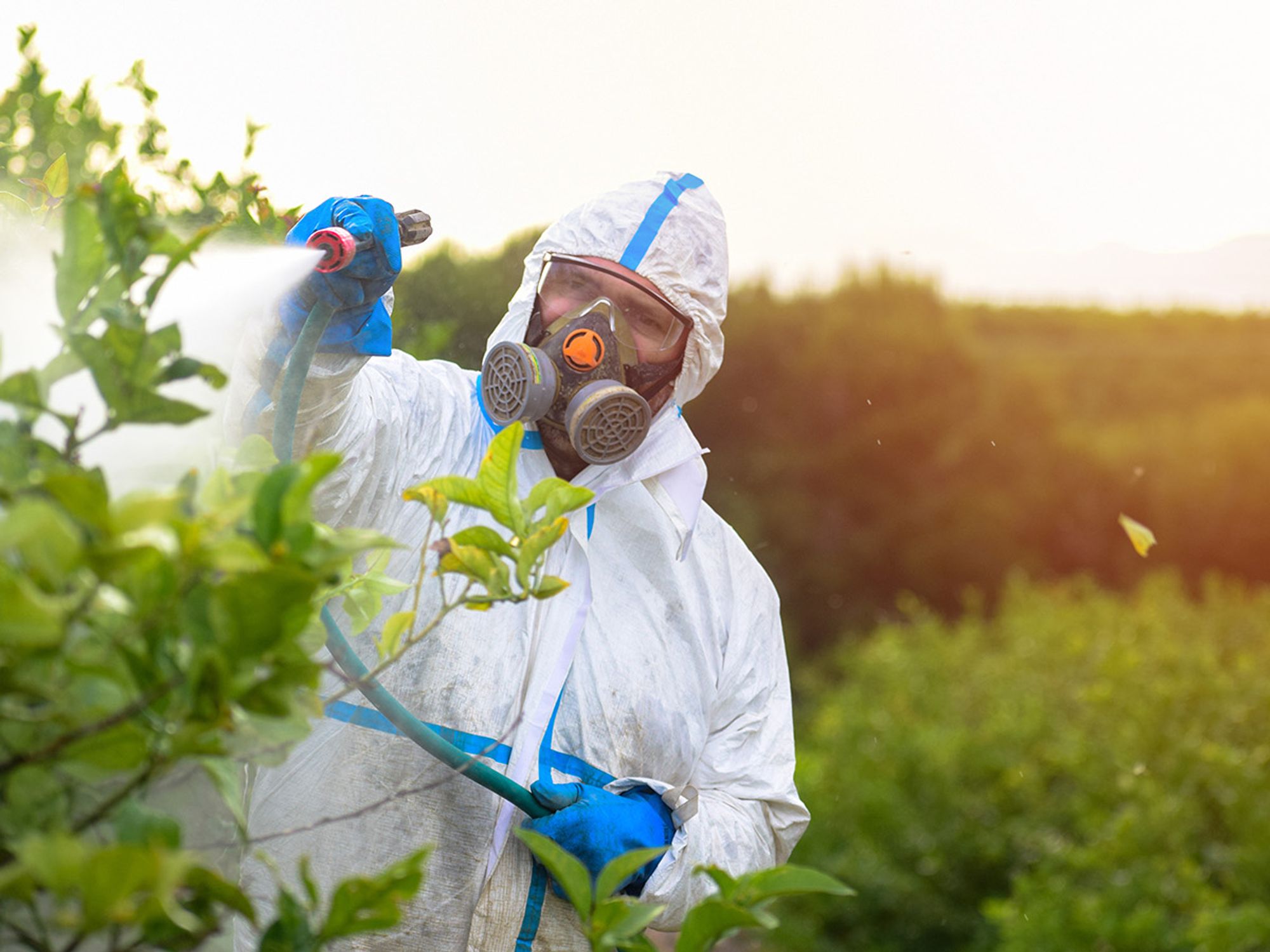Commercial applicator competency and certification

- To be certified, an applicator must be 18 years old and show competency in the core standards.
- An applicator must show familiarity with pesticide labels and labeling and their functions and take measures to avoid or minimize adverse health effects.
- Applicators must demonstrate practical knowledge of the principles and practices of pest control and proper and effective use of RUPs for each category in which they wish to be certified.
To demonstrate competency in the use and handling of restricted use pesticides (RUPs), a commercial applicator must pass a written examination that meets the federal standards and any related performance tests required by the state. The exam must include the core standards and the standards applicable to each category in which an applicator wants to be certified.
To be certified, an applicator must be 18 years old and show competency in the core standards, which are listed below. In addition to the general core competencies, applicators also must demonstrate practical knowledge of the principles and practices of pest control and proper and effective use of RUPs for each category in which they wish to be certified.
Label and labeling comprehension — Familiarity with pesticide labels and labeling and their functions, including all the following:
- The general format and terminology of pesticide labels and labeling.
- Understanding instructions, warnings, terms, symbols, and other information commonly appearing on pesticide labels and labeling.
- Understanding that it is a violation of federal law to use any registered pesticide in a manner inconsistent with its labeling.
- Understanding labeling requirements that a certified applicator must be physically present at the site of the application.
- Understanding labeling requirements for supervising noncertified applicators working under the direct supervision of a certified applicator.
- Understanding that applicators must comply with all use restrictions and directions for use contained in pesticide labels and labeling, including being certified in the certification category appropriate to the type and site of the application.
- Understanding the meaning of product classification as either general or restricted use and that a product may be unclassified.
- Understanding and complying with product-specific notification requirements.
- Recognizing and understanding the difference between mandatory and advisory labeling language.
Safety — Measures to avoid or minimize adverse health effects, including all of the following:
- Understanding the different natures of the risks of acute toxicity and chronic toxicity, as well as the long-term effects of pesticides.
- Understanding that a pesticide’s risk is a function of exposure and the pesticide’s toxicity.
- Recognizing likely ways in which dermal, inhalation, and oral exposure may occur.
- Common types and causes of pesticide mishaps.
- Precautions to prevent injury to applicators and other individuals in or near treated areas.
- The need for, and proper use of, protective clothing and personal protective equipment (PPE).
- Symptoms of pesticide poisoning.
- First aid and other procedures to be followed in case of a pesticide mishap.
- Proper identification, storage, transport, handling, mixing procedures, and disposal methods for pesticides and used pesticide containers, including precautions to be taken to prevent children from having access to pesticides and pesticide containers.
Environment — The potential environmental consequences of the use and misuse of pesticides, including the influence of all of the following:
- Weather and other indoor and outdoor climatic conditions.
- Types of terrain, soil, or other substrate.
- Presence of fish, wildlife, and other non-target organisms.
- Drainage patterns.
Pests — The proper identification and effective control of pests, including all of the following:
- The importance of correctly identifying target pests and selecting the proper pesticide product(s) for effective pest control.
- Verifying that the labeling does not prohibit the use of the product to control the target pest(s).
Pesticides — Characteristics of pesticides, including all of the following:
- Types of pesticides.
- Types of formulations.
- Compatibility, synergism, persistence, and animal and plant toxicity of the formulations.
- Hazards and residues associated with use.
- Factors that influence effectiveness or lead to problems such as pesticide resistance.
- Dilution procedures.
Equipment — Application equipment, including all of the following:
- Types of equipment and advantages and limitations of each type.
- Use, maintenance, and calibration procedures.
Application methods — Selecting appropriate application methods, including all of the following:
- Methods used to apply various forms and formulations of pesticides.
- Knowledge of which application method to use in a given situation and that use of a fumigant, aerial application, sodium cyanide, or sodium fluoroacetate requires additional certification.
- How selection of application method and use of a pesticide may result in proper use, unnecessary or ineffective use, and misuse.
- Prevention of drift and pesticide loss into the environment.
Laws and regulations — Knowledge of all applicable state, tribal, and federal laws and regulations.
Responsibilities of supervisors of noncertified applicators — Knowledge of the responsibilities of certified applicators supervising noncertified applicators, including all of the following:
- Understanding and complying with requirements in 40 CFR 171.201 for certified commercial applicators who supervise noncertified applicators using RUPs.
- The recordkeeping requirements of pesticide safety training for noncertified applicators who use RUPs under the direct supervision of a certified applicator.
- Providing use-specific instructions to noncertified applicators using RUPs under the direct supervision of a certified applicator.
- Explaining pertinent state, tribal, and federal laws and regulations to noncertified applicators who use RUPs under the direct supervision of a certified applicator.
Professionalism — Understanding the importance of all of the following:
- Maintaining chemical security for RUPs.
- How to communicate information about pesticide exposures and risks with customers and the public.
- Appropriate product stewardship for certified applicators.
